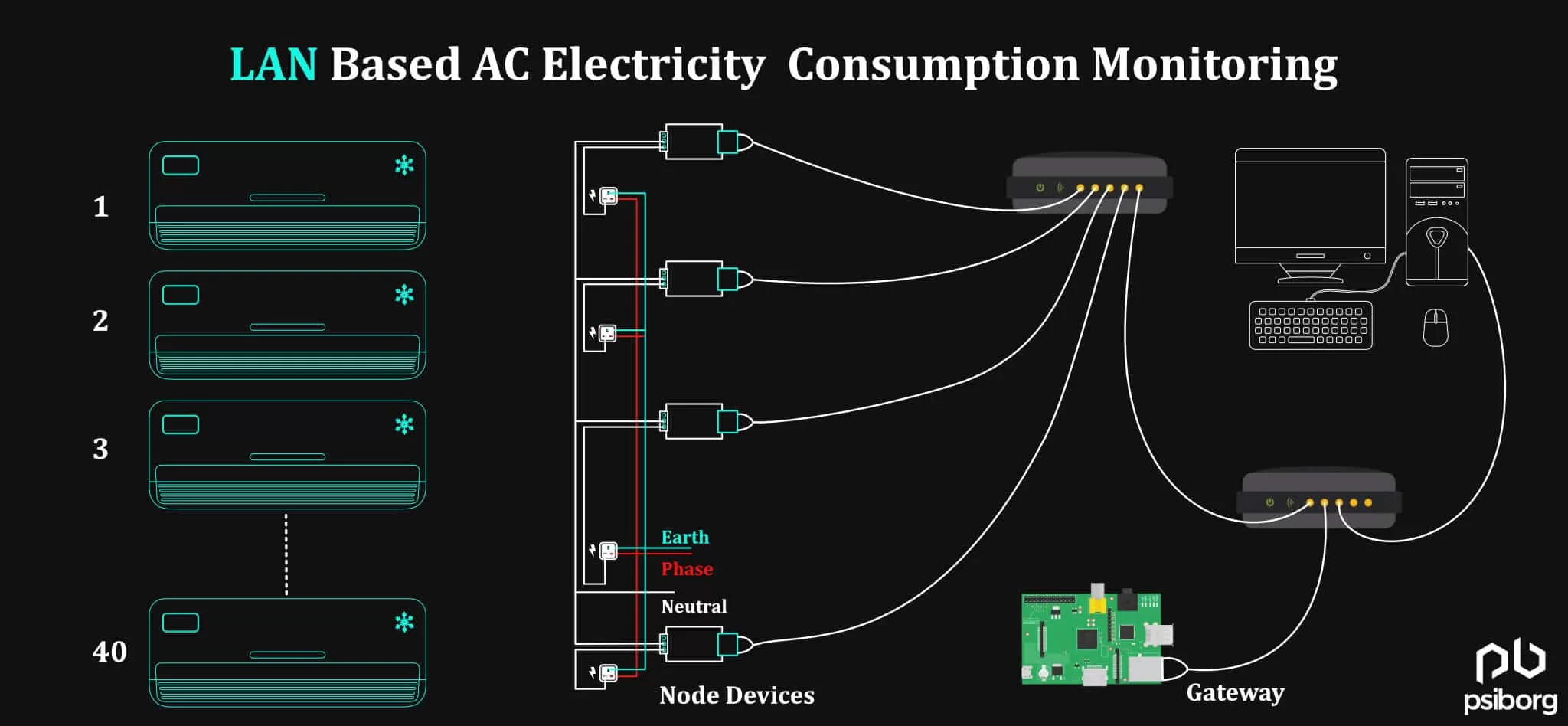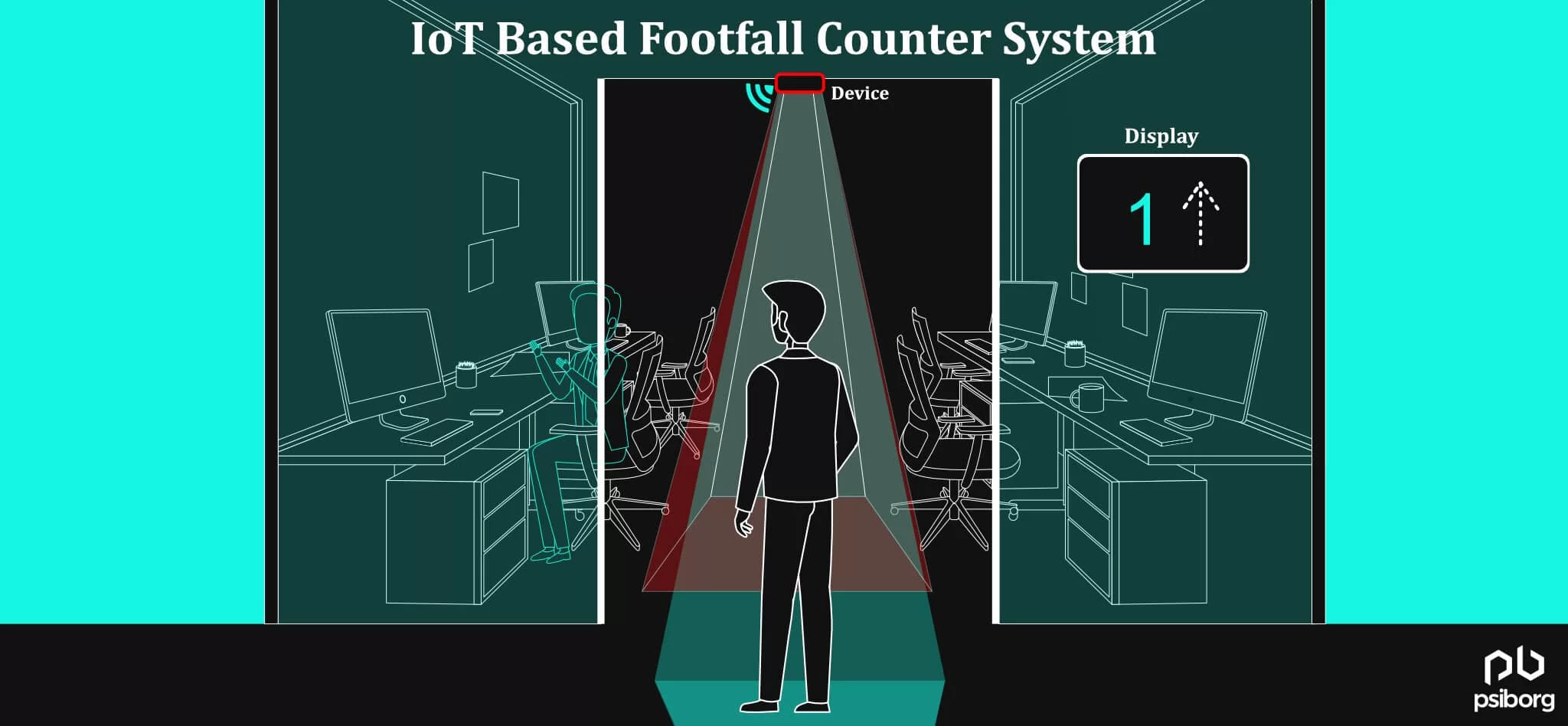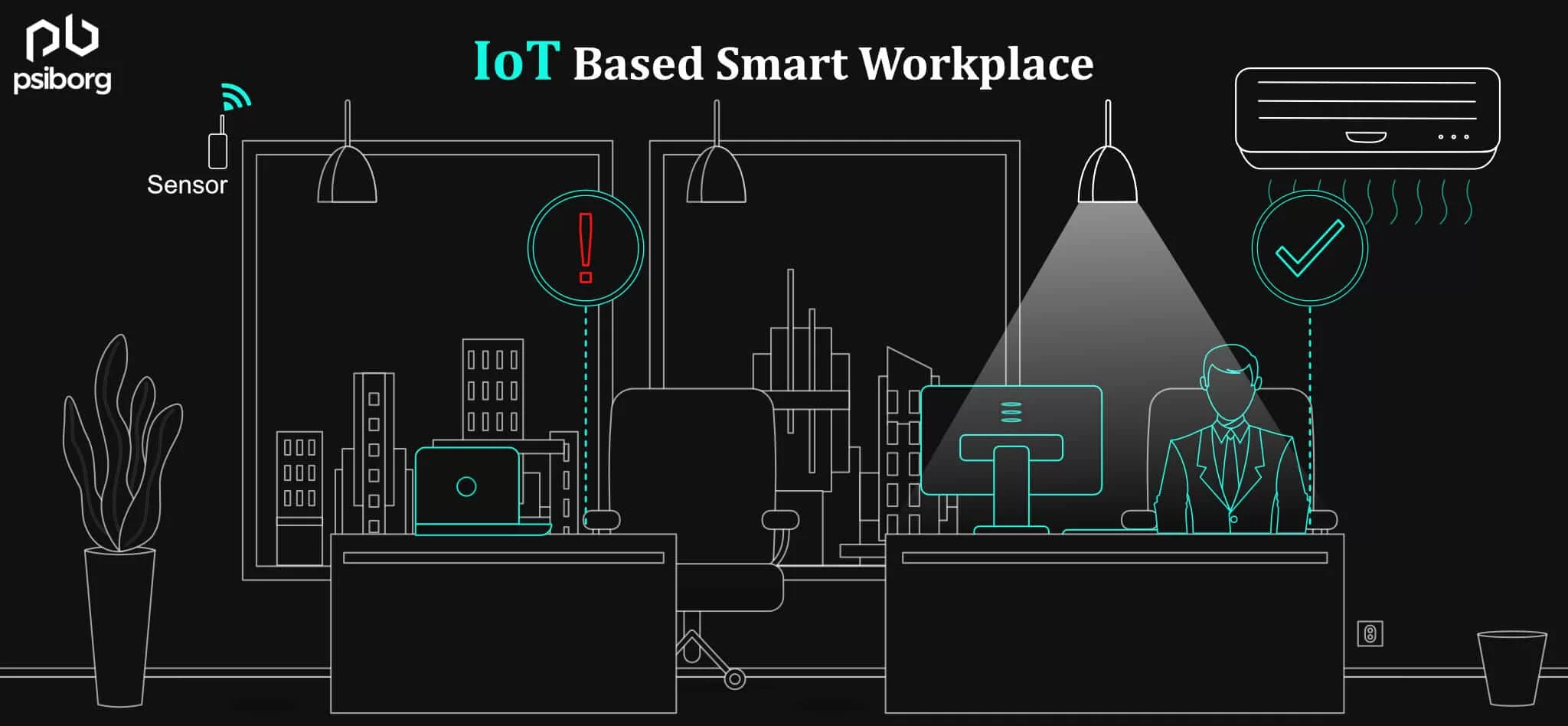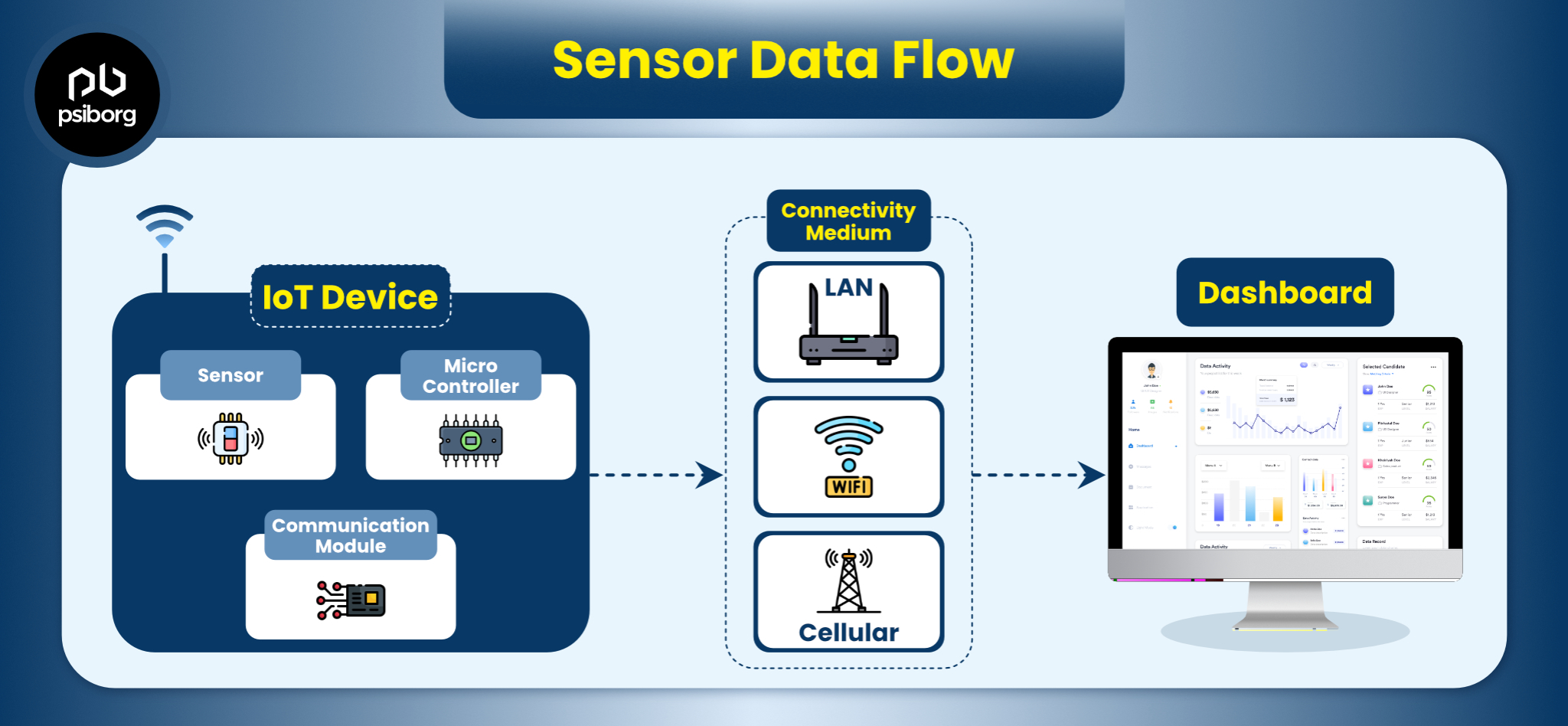There is no doubt that, in the modern world, our workplaces are also modernizing. And in this modern world, one big thing is the Internet of Things. IoT has taken the world by storm. The continuous advancement in IoT is today transforming all aspects of our lives, be it through the use of IoT in workplaces, intelligent lighting, security automation, smart cups or employee tracking solutions .
With the total number of IoT devices getting tripled from 8.74 billion in 2021 to 25 billion by 2030, it is safe to say that soon we can expect to see IoT devices on every corner, be it our homes, vehicles, restaurants, or offices/workplaces.
We have already discussed smart buildings and smart homes, so let’s talk today about smart workplaces.
But first, let me ask you- what do you think of the word ‘smart workplace”?
What’s your imagination of a smart workplace?
I don’t know about you guys and what your workplace fantasies are, but here’s what I use to think of smart workplaces.
Your system opens up automatically as soon as you sit at your desk, with smart lighting, temperature control in the room according to the number of people (no need to fight over the AC remote), an office with robots, and no need to tap an ID card for an attendance-just walk through the door and it will mark attendance.

Many of these are possible now, thanks to the Internet of Things in the workplace, and others will become possible in the near future. There is also the possibility of experiencing more advancement in the future.
Offices have started leveraging IoT solutions and IoT devices in the workplace to transform and manage employees. Let’s discuss some real-life workplace IoT solutions that are making our offices smarter.
WHAT DOES IT MEAN BY SMART WORKPLACES?
The Internet of Things is about connecting everyday objects to the Internet to allow you to control them remotely, collect and share data, and communicate with the users involved. IoT in workplaces includes various hardware and technologies like smart devices, robots, and AI to increase efficiency and create new business opportunities.
In the office, the employees are already surrounded by devices and appliances, but IoT takes the technologies that drive these devices and connects them to generic inert objects like lights, doors, pipe systems, televisions, and fridges.
Consequently, IoT promises to turn the office environment into connected spaces, where FMs can control heating, access, and ventilation all remotely, while office employees can work with more productivity and comfort.
HOW WILL SMART WORKPLACES BE IN AN IOT WORLD?
We have all had bad days at work. You forgot your RFID pass for the door-entry system and had to call management to gain access. Your favorite desk spot was occupied, the office was too cold, the lighting above your desk was way too bright, and you struggled with the audio-visual appliance in the conference room just before an important meeting. As a result, you didn’t perform well at the meeting. On the way home, you experienced a headache and thought about looking for a different place to work.
Thankfully, not every office ruins your day—at least not every single day. Here’s one thing to understand from the above example, the design and management of the workplace have a significant effect on the productivity, engagement, and creativity of the employees.
It turns out that even in an office with state-of-the-art technology, work can be unproductive and unsatisfying.
That’s why offices are becoming “smart workplaces” by equipping IoT devices in the workplace to make things better.
Here are some applications of IoT in workplaces that offices can implement to make their workplace smarter.
1. SMART FURNITURE
You might be aware that prolonged sitting in one place can lead to chronic diseases like diabetes, heart disease, and high BP, and unwell employees can never be productive. It is recommended to break up hours of sitting with some random activity to maintain health.
Smart furniture like stand-to-sit desks is one solution to this. Standing desks will encourage employees to switch between sitting and standing, by automatically adjusting the height of their workspace.
Other similar IoT devices for the office include ergonomic chairs that can be adjusted to each user’s height and preferences, mobile standalone workstations that allow employees to move around any location, and smart mirrors that display the time, weather, and similar information in the office restrooms, lobbies, and other areas
2. SMART SCHEDULING SYSTEM
One of the much-needed IoT solutions at the workplace is a smart meeting scheduling system to enhance meeting planning in the office.
By using the smart meeting scheduling system, several enterprises are solving meeting room underutilization issues.
This smart scheduling system monitors attendance rates and room usage metrics for better planning.
3. CLIMATE CONTROL
The most commonly used IoT technology for workspaces is climate control devices. These devices take a record of the humidity level inside the room and accordingly optimize the temperature.
Another good example of climate control is “smart window blinds,” which respond to the sunlight to protect the occupants from glare. These systems can also be connected directly to humidifiers and air purifiers to improve indoor air quality.
4. SMART ASSET MONITORING SYSTEM
Property loss can have a very high impact. Only workplace theft can cause $50 billion in annual losses to companies. Even if the device has been misplaced, finding it may take business hours.
Asset tracking technology can lower such risks. The employees can tag company assets with RFID tags, QR codes, barcodes, or GPS trackers. It allows them to manage essential properties at the workplace and create usage data for each. Also, in the case of misplacement or theft, the companies can use the tracking system to get the equipment’s location.
5. SMART ASSISTANTS FOR OFFICE AWARENESS
Smart assistants like Alexa can be great for personal management, but they lack features for business-level organizations. However, there is also Alexa for Business, which syncs the entire office’s IoT devices to provide everything from meeting tracking, weather reports, lighting, and all other custom settings.
It will be like JARVIS from Iron Man, who will manage the office on demand.
6. LIVE OCCUPANCY DATA
The other important thing to monitor at the workplace is the live office occupancy data. With IoT, you can get live information about the number of employees present at different parts of the office. At PsiBorg, we can do that with the help of door sensors that will track footfall counting and room use.

7. SMART LIGHTING
Smart lighting systems are the most commonly used IoT applications in the workplace. It is a sustainable solution, saves energy, and offers optimal working conditions for employees.
Along with smart lighting, energy consumption can also be reduced with the use of IoT devices.

PsiBorg is experienced in developing LAN-based AC electricity consumption monitoring solutions that can be installed in offices, thus transforming workplaces into smart workplaces.
BENEFITS OF WORKING IN A SMART WORKPLACE
Let’s take a look at some of the benefits of IoT in the workplace:
– Reduce operational costs: IoT-enabled smart office solutions are helping companies cut their expenses in multiple areas. Real-time occupancy is captured by the sensors for energy consumption monitoring.
– Improve employee experience and talent attraction: Smart workplaces also create a better working environment for employees by supporting their day-to-day activities. The team can leverage technologies to simplify their work and manage repetitive tasks. Looking from the recruitment point of view as well, the idea of working at a smart office will be more pleasing for modern workers.
– Boost performance and productivity: A connected, smart workplace can optimize the workflow. IoT devices in the workplace will help reduce physical barriers that hamper employee productivity.
– Decrease carbon footprint: By integrating IoT technology, smart workplaces can adopt sustainable practices that also attenuate climate change. Organizations can use offices to optimize energy consumption. The smart waste management system can sort waste to reduce the amount of non-degradable material that goes to landfills. All these practices will help an organization reduce its ecological footprint.
– Make informed workplace decisions: With the growth of an organization, the needs of employees also grow. Instead of making assumptions, companies can leverage IoT solutions to predict their needs and make data-driven decisions.
LEVERAGE PSIBORG’S IOT SERVICES TO BUILD SMART WORKPLACES
PsiBorg’s team has years of expertise in creating innovative IoT solutions and offering custom IoT services.
We offer various IoT-related services, like IoT product development, IoT mobile app development, embedded firmware development, IoT dashboards, IoT cloud integration services, PCB design services, and wireless sensor networks in IoT.
Our team holds extensive experience in building air quality monitoring software, waste disposal management systems, climate control systems, smart scheduling systems, and smart lighting solutions.
Smart workplaces offer immense growth opportunities for businesses. And with rapid technological advancement, organizations that can adopt smart workplaces now have a strong chance to future-proof their businesses.
PsiBorg can be a bridge that will link your current organization with IoT technology, making it future-proof.
Gain a competitive edge by getting all your IoT-related services done by PsiBorg and accelerating your business.
Contact us today to learn how we can help you integrate IoT at the workplace, making it smarter.
FAQs
Examples of implementing IoT in workplaces are:
– Installing smart sensors to monitor office equipment performance and anticipate maintenance requirements.
– Using IoT devices to track employee productivity and optimize workflow efficiency.
– Implementing smart lighting systems that adjust based on occupancy and natural light levels to save energy.
– Using environmental sensors to monitor air quality, temperature, and humidity in office spaces to improve employee comfort and health.
IoT can be used in the workplace for a variety of purposes, including optimizing operations through real-time equipment and process monitoring, improving workplace safety through sensor-based hazard detection, increasing employee productivity with employee tracking solutions, and streamlining facility management with automated lighting, HVAC, and access control systems.






